-
 symposiumDEC 1717/12/2018 | 10:00 - 16:30Vietnam Museum of EthnologyEvolving Heritage17:00 Action on site: Yii KahoeDEC 1818/12/2018 | 10:00 - 16:30Vietnam Museum of EthnologyTechnology On The Move17:00 Action on site: Piano plays piano (Elico Suzuki)Otto Sidharta
symposiumDEC 1717/12/2018 | 10:00 - 16:30Vietnam Museum of EthnologyEvolving Heritage17:00 Action on site: Yii KahoeDEC 1818/12/2018 | 10:00 - 16:30Vietnam Museum of EthnologyTechnology On The Move17:00 Action on site: Piano plays piano (Elico Suzuki)Otto SidhartaOtto Sidharta
Composer, director of Pekan Komponis Indonesia Festival in Jakarta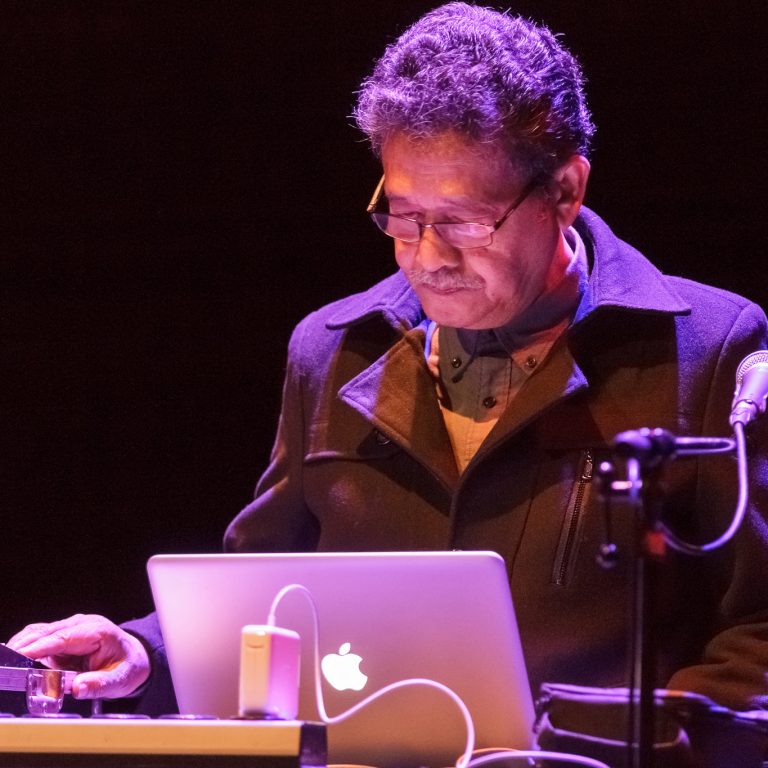
How should we react to the growth of technology
ABSTRACT:
Throughout history every civilization has used available materials and tools to make music. This available materials and tools are developed according to the achievements of technology at the time. So, music is always in line to the achievements of technology and knowledge has played a major role in broadening the boundaries of what we called music. Yet at the same time, some also thought that technology destroy the delicacy of music. Mobile devices, ringing cell phones and texting create significant disruptions to music. We were split regarding the opinions of whether technology had negatively impacted music, but we have to disagree that it has diluted the music by opening new perception of music.
ABOUT THE SPEAKER:
Otto Sidharta finished his post-graduate study in composition and electronic music composition at Sweelinck Conservatorium in Amsterdam under the guidance of Professor Ton de Leeuw, and later on he gained his doctoral degree at Institute Seni Indonesia Surakarta.
Sidharta's interest in using environmental sounds to express his musical ideas developed when he was a student at the Jakarta Institute of Arts (Institut Kesenian Jakarta). He performed his first electronic music piece, Kemelut, based on water sounds in the First Indonesian Young Composer Festival (Pekan Komponis Muda) in 1979.
Besides being a composer, Sidharta used to be a Chairman of both the Music Committee of Jakarta Art Council (Komite Musik Dewan Kesenian Jakarta) and Indonesian Composers Association (Asosiasi Komponis Indonesia). He teaches at Jakarta Institute of Arts (Institut Kesenian Jakarta), Sekolah Pascasarjana IKJ ( IKJ Graduate School) and in Cantus (Music Education and Information Center, Jakarta). Furthermore, he used to be the Music Director for the Nusantara Symphony Orchestra (Orkes Symphony Nusantara) for several years.Arnont NongyaoArnont Nongyao
Sound art artist, founder of Chiang Mai Collective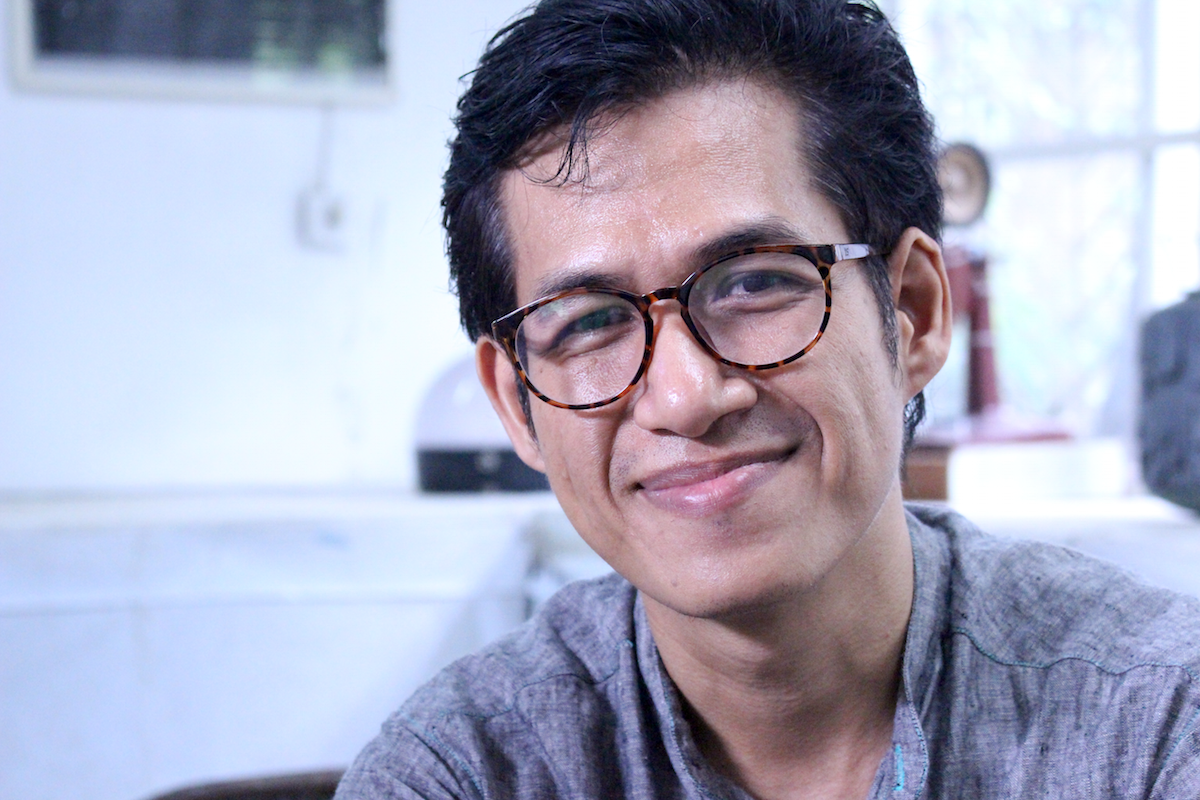
Another Sound in Chiang Penh to Phnom Mai
ABSTRACT:
This topic is about experimental sound art project between Khvay Leoung (PP) and Arnont Nongyao (CM) (sound artist) Leoung as an Ajar at funeral services and as a sound inventor in bedroom/studio. Leoung has a special characteristic with noise sound even he didn't has background about music. Arnont’s interested and curiosity to connection, he try to a conversation with Leoung by another way than language because Leoung couldn't speak in english. Arnont follow to help Leoung for funeral events and stay with him after for learning to make a new tool that's make a new conversation each other.
ABOUT THE SPEAKER:
Arnont Nongyao works and lives in Chiangmai. Arnont is working with various and different media includes sound, video, installation, site specific, public art etc. Arnont’s work is engage with his interest in vibration; he works on diverse art experimental projects, vibration-related. Some of his selected exhibitions include solo exhibition “Another Sound” co-work with Khvay Loeung, Sa Sa Art projects, Phnom Penh, Cambodia (2018). “Unstable(ry) Life”, 2016, Manif d’art, Quebec, Canada. 16th Media Art Biennale WRO 2015: Test Exposure, Wroclaw, Poland, TRANCE at Gallery VER, Bangkok, Thailand (2014), Imaginarium, (Water Cave) at Faculty of Fine Arts, Chiang Mai University, Chiang Mai, Thailand (2012), DRIFT A series of experimental sound project Project #1 : Duration at Bangkok Art and Cultural Centre, Bangkok, Thailand (2014).
Kai LamKai Lam
Artist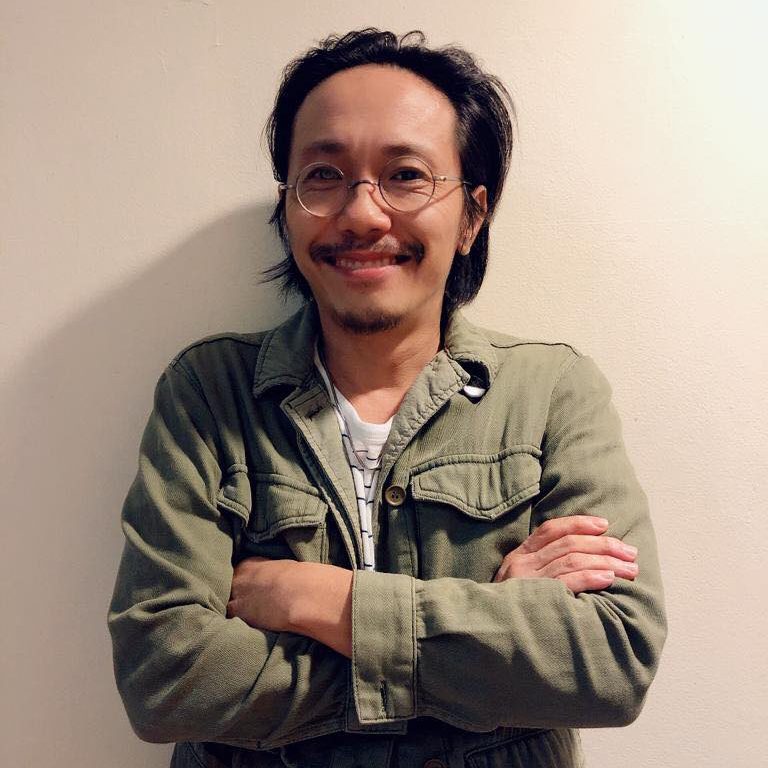
Ephemeral Arts and Autonomy in Artists Network
ABSTRACT
My presentation will be based on the artist network; as such the need to establish an upkeep independent organizing, production and documenting of the artistic projects (time based, ephemeral and performative works) in visual and aural art forms; that are in response to the impending socio-political and cultural climate. The presentation emphasizes on the autonomy of the self-sustaining art processes to maintain an accountable and transparent process in order to reach out to a community using technology and creativity.
The projects; Future of Imagination (2007-Current), Rooted in The Ephemeral Speak (2009-2013) and Live Loop Asia (2016-current) will be presented as examples of creative processes which I am personally engaged with; Within the framework of these projects, I will present various issues that has surfaced including, censorship, fund-raising, community-engagement and the educational aspects of independent art projects.
Project links:
www.foi.sg
www.rootedintheephemeralspeak.com
www.facebook.com/liveloopasiaABOUT THE ARTIST
Kai Lam, Artist, Singlish Punk, Singapore
Kai Lam, born in 1974, performs as Singlish Punk, B.O.A & BoA; the artist’s choice of medium is through the use of field recordings, circuit bended machines; DIY noise synth & an assortment of found instruments to generate quasi-electronic compositions, live sounds as a cross-disciplinary exploration by the means of audio arts. SG Punk is a performance art pseudonym that was started by multidisciplinary artist Kai Lam in 2005 as a means to resist the consumerist tendencies & cultural hegemony in urban living; Singlish Punk celebrates the hydridisation of diverse languages and cultures; seeking self-autonomy in the name of cultural and political freedom through the pluralist practice of art.
https://soundcloud.com/singlish-punk
https://soundcloud.com/bo_abbyArvin NoguerasArvin Nogueras
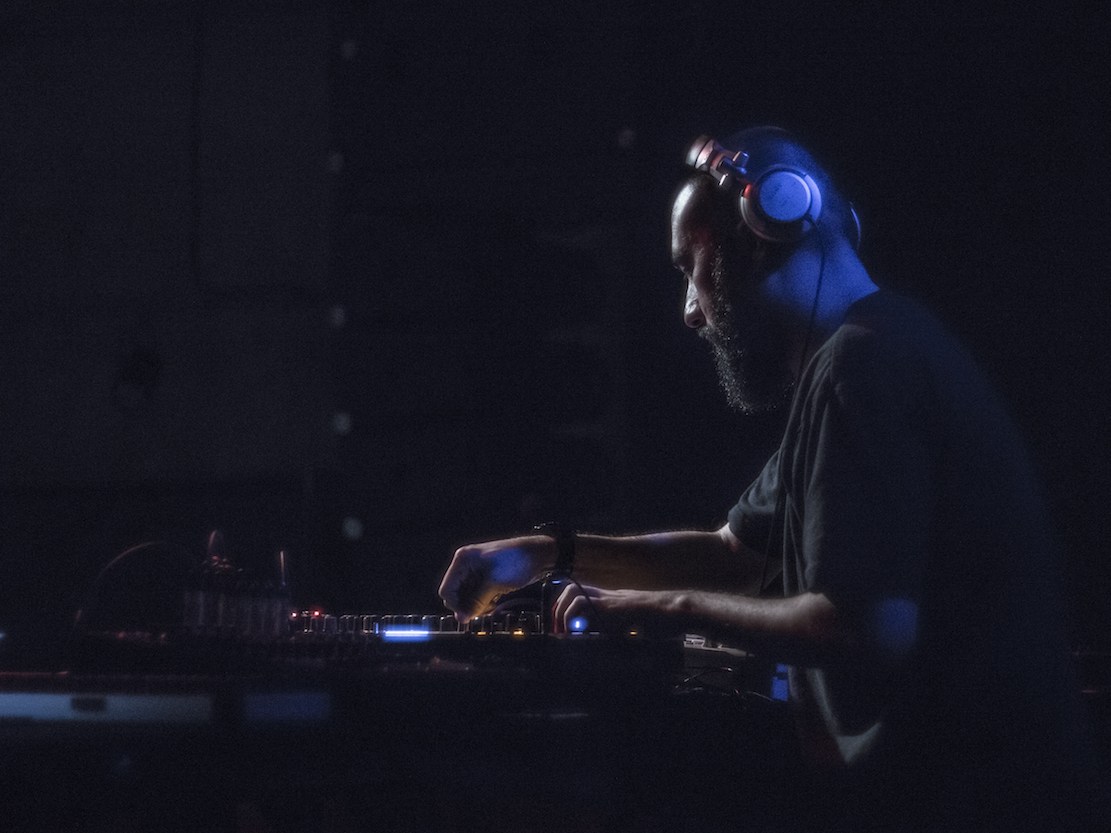
Extracted, Spliced & Sublimated: Exploring Intersections with Art & Technology
ABSTRACT:
Seen through previous creative narratives of visual and sound based creations, technology’s role has been quite instrumental in shaping the works of different artists throughout time. My interest with various art forms and music genres led me to combine multiple disciplines of art with technology. At an early age, I developed an interest in visual arts and music – then I eventually got involved in the subculture of hip-hop creating beats and graffiti pieces. Which became a gateway for further creative exploration, and discovery of experimental music, sound art, improvised music and experimental video art. These were all gradually realized in the last 28 years. Technology made it possible for me to cross and merge these different disciplines, using an assortment of modes in culminating my ideas into actual works or performances.
ABOUT THE SPEAKER:
Caliph8, aka Arvin Nogueras, was born in Manila. He graduated from the University of the Philippines College of Fine Arts in 2000.
As a sound and visual artist, he explores the implication of merging, summing and hybridization, creating a new artistic syntax out of the debris of the already‐given.
Nogueras delves into composition and sound exploration, where he deploys sheets of polyrhythmic beats, one-‐note samples and deconstructed audio cut and paste sound sequences, creating an aural continuity between the sampled musician and the synthesist. He explores sample-‐based synthesis and granular synthesis as part of his creative methods in composing and manipulating sound.
He examines free form improvisation, combining sound manipulation techniques with prepared gear or objects with other recorded or sampled sounds where ideas of tension, summing and resolution all interweave. This allows him to scavenge for new meaning within the pronounced yet cryptic dialogue between existing ideas and encountering new ones accidentally in that given moment. Nogueras’ influences span from true school hip-‐hop, experimental, folk, no wave, noise, sound art and ethnomusicology among others. He combines all of these elements and create new iterations. For the past 23 years, he has been active in Manila and overseas, primarily involved with the local visual and sound art platforms. He’s had a couple of exhibitions, film scoring projects and numerous performances in Manila and overseas.
He also founded the sound performance platform Subflex (2003 to present), where he curates the performances featuring a plethora of diverse unpopular sound output ranging from traditional, new music to experimental and noise. In 2015 he released a vinyl version of his album called “Stillborn Etudes on Dub Temple Records (Brisbane), a cassette tape called “Derelict Features of the Domain” on SVBKVLT (Shanghai) label in 2013 and a CD release “Realized Patterns & Splintered Sequences” from O-‐Rich (Tokyo) 2015, and a cassette release for Manila-‐based label NINE IRON called “Vertical Stack”, 2017.
He worked with Jang Young-‐Gyu, Raed Yassin, Asa Chang and Artyom Kim on a composition and sound performance called Vanishing Voices held at the ACC Museum, South Korea in 2015. In 2017, he participated in AMF curated by Otomo Yoshihide, Yuen Chee Wai and DJ Sniff. Last year during Jose Maceda’s centenary celebration and exhibition at the CCP, Manila, Nogueras was tasked by the UP Ethnomusicology Department to interpret Accordion & Mandolin, an unpremiered piece for 19 instruments that Maceda wrote before he passed on.
His collaborations with different artists include: Keiji Heino, DJ Sniff, Yuen Chee Wai, Sin:Ned, Otomo Yoshihide, Nonplus, Roger Lopez, Seido, Rully Shabara, Kok Siew-‐Wai, Teichmann Brothers, Nguyen Thanh Thuy, Fumitake Tamura, Dee Sheng, Lou Chao Yun among others.Joyce Beetuan KohJoyce Beetuan Koh
Electroacoustic musician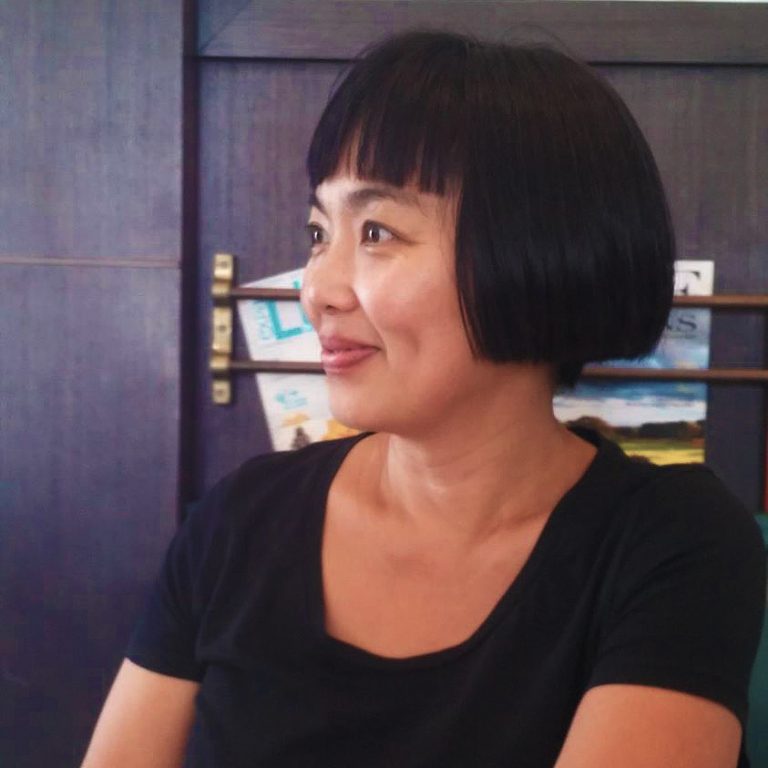
Musicialising a scientific theory
ABSTRACT:
If we could hear the vibration patterns of 1-dimensional strings interacting when curving space, what would their harmonic colours, rhythmic pulses and timbre quality be like? These aural imaginations stem from my interest in the string theory, and the musing around the fundamental building blocks of the universe developed into a multimedia work, ‘On the String – theatre of music’. In this session, I will highlight aspects of string theory that are mapped onto the musical canvas through the designs of an interactive system, an immersive environment, and two new musical interfaces for 18 musicians (a pipa player, a harpsichordist, 14 strings, a music interface performer and an interactive system player).
ABOUT THE SPEAKER:
Joyce Beetuan Koh writes concert music, works in dance collaborations, and creates sound installations and multimedia productions. Underpinning her creative impulse is a fascination with architectural structures and scientific theories. Nuanced by her Asian sensitivity, the result is a language that is abstract, self-contained and never sentimental. Two piano works, "la pierre magenta" and "Piano Peals" are published by the ABRSM (UK). Her music is featured at international festivals notably Biennale Musiques France, Birmingham Frontiers Festival and performed by Nieuw Ensemble, Reconsil Ensemble, BBC Symphony Orchestra, Hungarian SO, Singapore SO and Stavanger SO.
Highlights of her multimedia works include "On the String" multimedia, 2010, Lindborg, Khiew at Singapore Arts Festival), "The Canopy" (sound installation, 2011/2013, Lindborg, Yong at 2013 World Stage Design, UK), "Fire Monkey" (site-specific dance, 2016, Arts Fission Company at Mapping Melbourne Festival), "Hearing Lines" (audio-visual, 2017 Asian Computer Music Project, Seoul) and "Sounding Body" (dance-music, 2017, Raw Moves Company at Sydney InsideOut Festival). Since 2014, she is Vice Dean (Interdisciplinary Studies) at the Nanyang Academy of Fine Arts, Singapore.Jiradej SetabundhuJiradej Setabundhu
Electroacoustic composer, professor at PGVMI (Bangkok)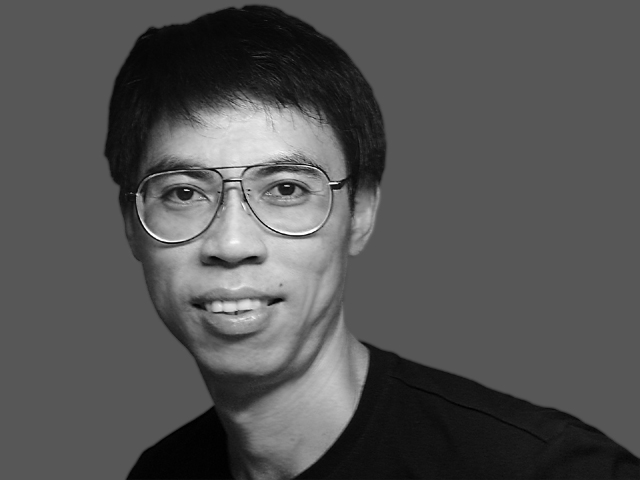
Echoes in the Uncanny Valley
ABSTRACT:
“It was like she was born to the form, even though the technology that made that form possible hadn’t even existed when she was born.” Wrote William Gibson on the intertwined relationship between technology and art in his novelette The Winter Market. And indeed art and science are two parallel streams of the same creative well. In this presentation, I would like to share with you my low-tech approach in creating sound work that reflects upon the high-tech world of our time, now that we are approaching an era where technology is accessible to anyone and, as Arthur C. Clarke put it, “indistinguishable from magic.”
ABOUT THE SPEAKER:
Jiradej Setabundhu studied music with Bruce Gaston at Chulalongkorn University, Thailand and worked as a guitarist and composer with the Fong Nam Ensemble. He attended the University of Southern California for his master’s degree, studying with composer Donald Crockett. He received his doctoral degree in composition from Northwestern University. His teachers include M. William Karlins, Marta Ptaszynska, Amnon Wolman, Michael Pisaro and Stephen Syverud. Currently he is Vice President for Academic Affairs at Princess Galyani Vadhana Institute of Music.
Jiradej Setabundhu has been the recipient of the Michael Mason Scholarship, the NSCO Composers Award, the William T. Faricy Composition Award, the Yoshiro Irino Prize and the Composers Guild Award. His composition has been performed in China, Croatia, Indonesia, Italy, Japan, Malaysia, Poland, Slovenia, Thailand, and the United States.Trần Duy HưngTrần Duy Hưng
Programme Manager, Arts and Creative Industries, British Council in Vietnam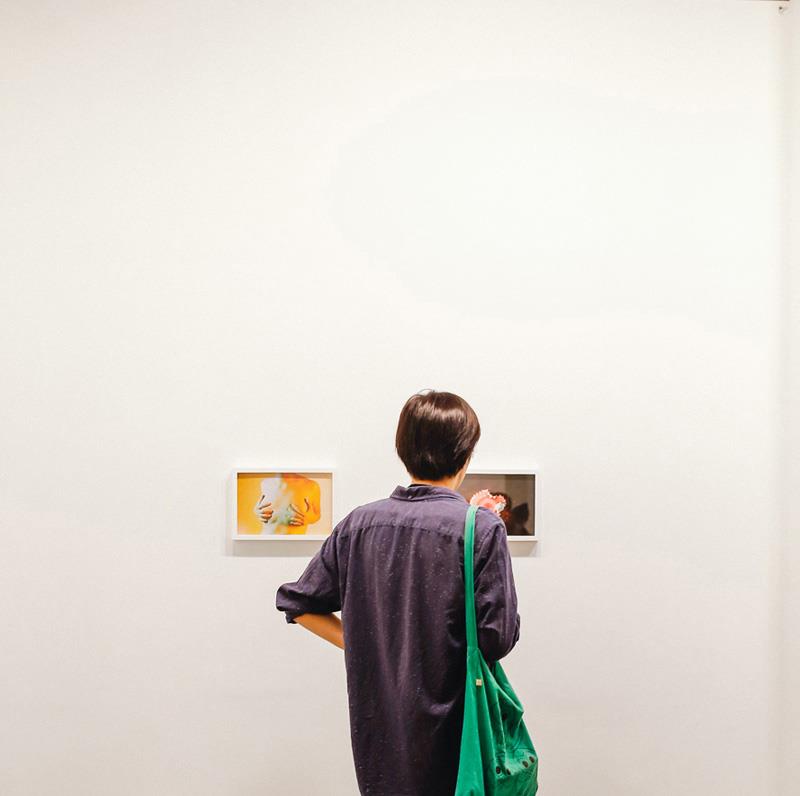
About:
Trần Duy Hưng is a Hanoi-based curator and writer working across music, film and other contemporary art forms. He founded The Onion Cellar in 2011, an initiative via which he has programmed and organised upwards of 100 film screenings, concerts and festivals championing a wide range of alternative/underground artists and projects from around the world. Music-wise, some of the acts that have performed for The Onion Cellar in Hanoi and HCMC include Zeni Geva (Japan), Kangding Ray (France), Awesome Tapes from Africa (US), OvO (Italy), The Observatory (Singapore), Hanging up the Moon (Singapore), Thisquietarmy (Canada), MoE (Norway), etc and many underground Vietnamese artists, renowned and emerging alike. Elsewhere, Hưng has worked for Galerie Quynh (HCMC) and also co-curated/organised projects such as the exhibition 462 Đường Bưởi (a Nha San 20th Anniversary event), Out of Frame Festival of Moving Image, and the exhibition The Multiverse (Dogma Prize 2017). For his day job Hưng works in the Arts team at British Council Vietnam. He is also a non-permanent member of Rắn Cạp Đuôi Collective.
SpeakersModeratorBountheng SouksavatdBountheng Souksavatd
Musicologist - Musical Critic, Member of International Council for Traditional Music (iCTM), Commissioner of the Lao Performing Artists’ Association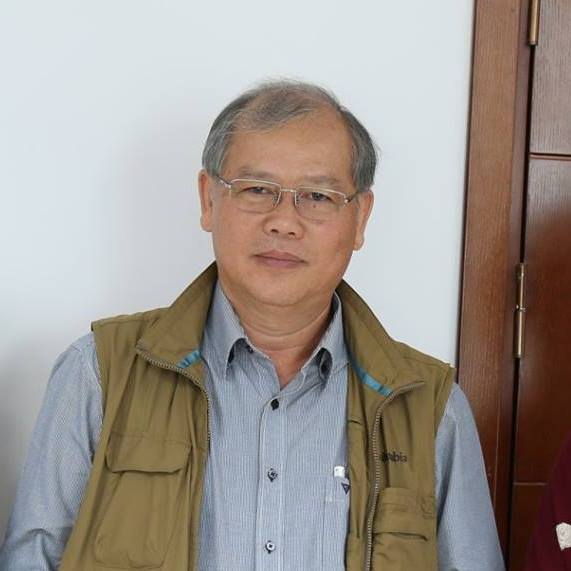
An Overview of Traditional Performing Arts in the Lao People's Democratic Republic
ABSTRACT:
Lao People's Democratic Republic is a multiple ethnic independent country. Laos is well known for being home to the splendid Champa flower (Plumeria) and a wide variety of traditional performing arts that cast the diverse cultural traits across the country. In this presentation, I would like to give an introduction to a number of musical arts of Laos, such as the royal music of Maholy, Nangkeo dances, Khaplam folk melodies, and especially Lamvong, a form of community art.
ABOUT THE SPEAKER:
Dr. Bountheng Souksavatd received his PhD in Arts from the Vietnam National Institute of Arts and Culture in 2001. Bountheng is currently a music researcher and critique, a member of the International Council for Traditional Music (iCTM) and Committee Member of Lao Association of Performing Artists. He has led and participated in many national and international projects, namely Culture and Development Geared Towards Socialism, Route 9: Opportunities and Challenges, so on. He has published a series of books in music and intangible cultural heritage, such as Laodoeum Melody, Lao Dictionary of Music… He has attended many national and international workshops organized in Laos and many other countries, namely Thailand, Cambodia, Japan, Korea, China, the United States and Vietnam.
Song SengSong Seng
Leading of Music Program - Cambodia Living Arts (CLA)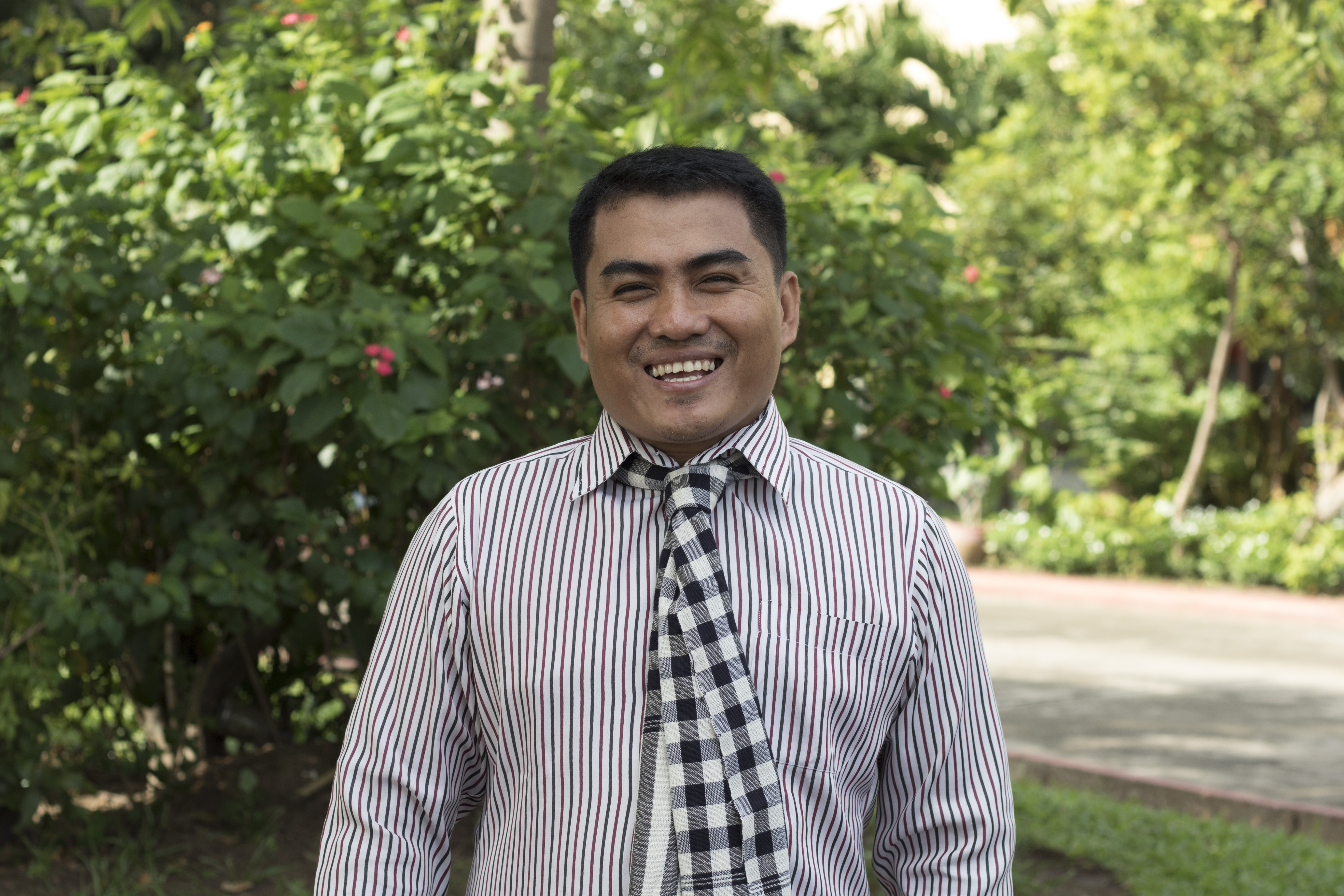
Building Capacity and Independence: Artists for Social Transformation in Cambodia
ABSTRACT
Since 1998, Cambodian Living Arts has been supporting musicians and dancers to develop and enhance their country’s traditional arts and heritage. We began working with old masters and young students to ensure that the traditional art forms, which were threatened since the time of the Khmer Rouge, do not disappear. Our focus has been on the revival and transformation of Khmer arts. We now have broadened our work to support emerging artists to foster their abilities to independently develop their specific art forms, and we provide professional training for arts leaders to build their capacity for sustainable arts management.
ABOUT THE SPEAKER
Song Seng is Head of Cambodian Living Arts programs in Siem Reap, using his 12 years of experience as a producer, manager, facilitator and arts administrator to lead the development of an active and engaged arts community in the town. He began his career with Cambodian Living Arts, working to revive the transmission of endangered performing art forms and to continue the legacy of the old Master Artists. He has produced festivals in Cambodia and taken artists on tour internationally. He also provides training and mentoring to emerging artists and managers through CLA’s Learning & Leadership Program. Seng has a dream to see every Cambodian learning the arts and to see Cambodia bringing international quality arts and best practices to the global arts community.
De Silva Alicia JoyceDe Silva Alicia Joyce
Adjunct Lecturer in Music, Nanyang Academy of Fine Arts (NAFA); Vice-President, Composers Society of Singapore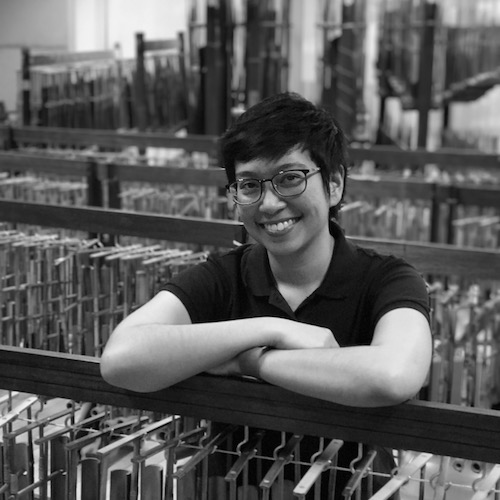
The Angklung Kulintang Ensemble, a Singapore Phenomenon
ABSTRACT
The Angklung, a traditional bamboo instrument from West Java has recently been inscribed on the Representative List of the Intangible Cultural Heritage of Humanity. Traditionally played in the pentatonic scale, it has now been largely recognised as a chromatic instrument. It was first introduced in Singapore in the 1960s, and has since been integrated into some schools as part of their core-curricular activities (CCA). Its has often been recognised as an instrument that is well suited for folk songs, and the occasional performances of popular hits and favourites. So, how does an instrument that is not native of a country develop or evolve? What about the integration of instruments of a different cultures together? In this session, I would be sharing my perspective as a performer, educator and composer, exploring the above questions, as well as issues about (local) identity, performances and even music education.
ABOUT THE SPEAKER
De Silva Alicia Joyce teaches and conducts Angklung Kulintang, and plans the curriculum for Sonic Directions, a company providing music enrichment lessons to local schools and organizations. She also heads the Gamelan Ensembles at the Nanyang Academy of Fine Arts and the National Institute of Education.
She has composed for various Angklung Kulintang Ensembles, organised concerts which feature New Music, as well as executed concerts through her groups Quinnance and Chamber Sounds, which feature the works of Singapore's young composers. She also has extensive experience in leading schools to achieve distinction awards at the Singapore Youth Festival.
Alicia's areas of interest and research include Music and Culture, Music and Religion, Integration of the Arts, as well as the role of Music (Arts) in Holistic Education.
Ne Myo AungNe Myo Aung
Pianist and instructor at Gitameit Music Center in Yangoon
The Sandaya: A Story of Recovering Burmese Music
ABSTRACT:
This paper will explore my experience of studying the sandaya, the Burmese piano. I came to Burmese music studies late, through the sandaya. Some Burmese musicians think that Burmese music is inferior. To them, it’s not systematic, has no pedagogy, no syllabus, no curriculum, no theory, no notation. To modernize Burmese music, they think we need to standardize, systematize and transcribe it using western music methods. This has been ingrained on my mind. So when I got a chance to learn music (in 2003), I learned the western classical piano first. Then, after a few years, I felt it was time to switch to the Burmese piano in 2010.
ABOUT THE SPEAKER:
Ne Myo Aung holds a MA degree (Ethnomusicology) from the University of Washington, Seattle. He was born in Tamu, Myanmar, in the far northwestern region of the country, and made his way to studies in Yangon, where he gained a diploma in Computer Art. He was employed as a 3D animator in Yangon, working with the prestigious post-production company of young artists called Hepta Digital Art to create animation advertisements for Myanmar Radio and Television Broadcasting. His interest in Sandaya (playing western piano in Myanmar Traditional music) studies led him to U Moe Naing and Kit Young, with whom he studied piano and other areas of musical knowledge at the Gitameit Music Center; he credits his development of technique and repertoire to studies with Sandaya U Khin Hla and Sandaya U Thet Oo. He has performed as a pianist, composer and singer locally or internationally. His interest turned toward the archiving and preservation of traditional music in Myanmar in various ways, including the transfer with Chris Miller of almost 3000 Myanmar 78 rpm records into digital format, and as interviewer, cameraman and editor of the music and dance of over 40 elderly musicians in Yangon and across the Burmese countryside. Just prior to receiving the Fulbright award for study at the University of Washington- the first recipient of the award from Myanmar for study in the arts - he was teaching piano at the Gitameit Music Centre and working as librarian in the first music library of Myanmar. Recently, he has been selected as a musical advisor of Myanmar traditional music for C ASEAN Consonant, a traditional orchestra which founded by 10 ASEAN musicians. Ne Myo Aung is currently working as Dean at Gitameit Music Institute and is also a coordinator of Teaching Artist Program (TAP), a joint program which is conducted by Gitameit Music Institute and University of Washington, Seattle.
The Six TonesThe Six Tones
Artists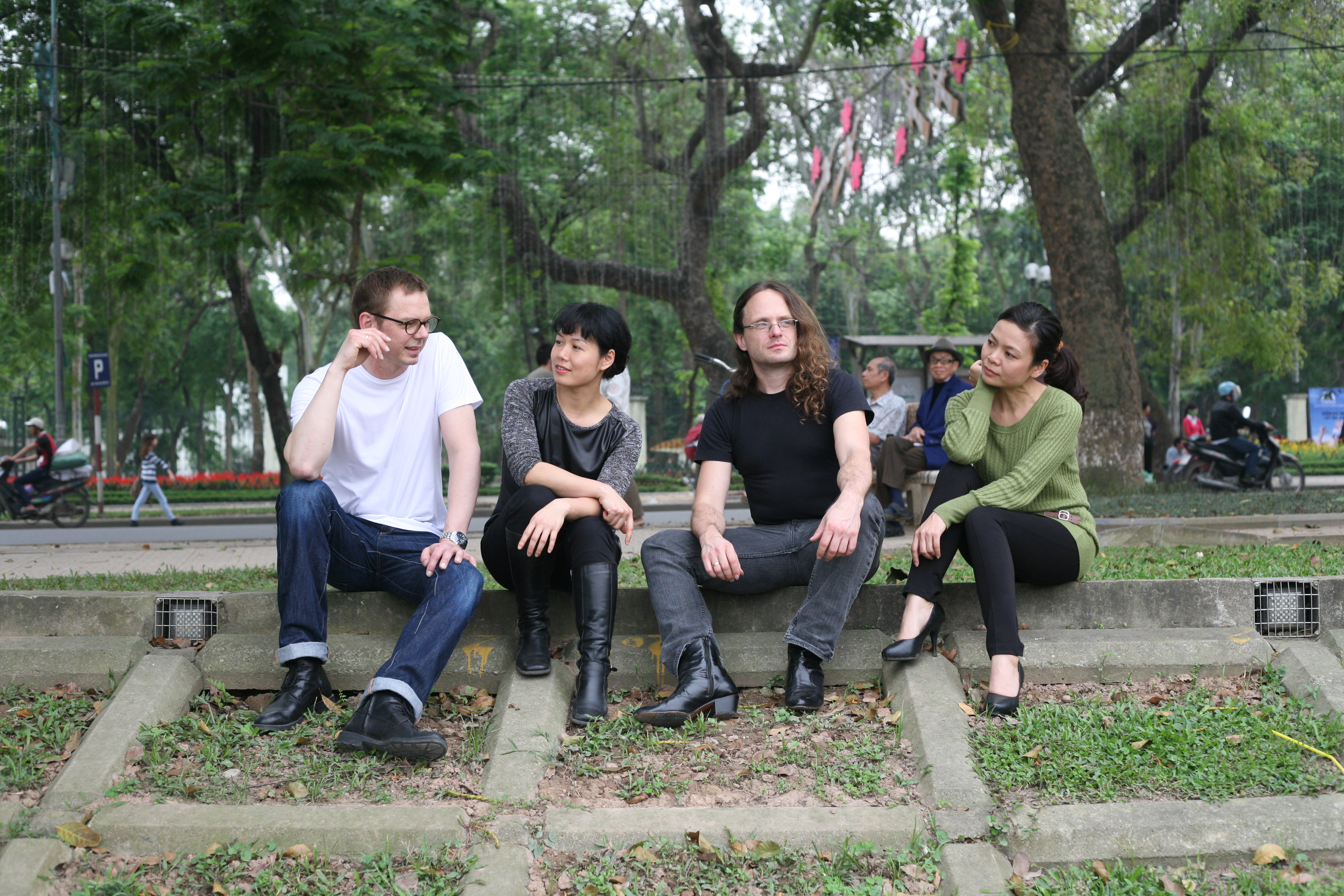
Musical Transformations through intercultural collaboration
ABSTRACT:
The Six Tones is a platform for intercultural artistic collaboration started in 2006. Through an engagement with traditional Vietnamese music and theatre, the group has created music theatre, film and choreographed performances. In a new research project titled “Musical Transformations”, researchers in ethnomusicology collaborate with The Six Tones and master performers of tai tu. The aim is to develop new knowledge and deepened understanding of processes of renewal of musical practices in intercultural contexts through the development of decolonized methods. In this presentation, two members of the group present their intercultural practice through examples from their artistic work.
ABOUT THE SPEAKER:
The Six Tones are Nguyen Thanh Thuy (who plays dan tranh) and Ngo Tra My (who plays dan bau), two Vietnamese performers, and the Swedish guitarist Stefan Östersjö. Since the project started, we have been collaborating with the composer and improviser Henrik Frisk, who has both composed works for the ensemble as well as toured with the group as a laptop improviser.
Photo: (left to right) Henrik Frisk, Nguyen Thanh Thuy, Stefan Östersjö, Ngo Tra My
Nguyen Xuan Son (SonX)Nguyen Xuan Son (SonX)
Musician
Before and After a Tradition is Contemporary
ABSTRACT:
“Does heaven say anything? Yet the four seasons rotate, and hundreds of things grow. Does heaven say anything?”, Confucius. Along with time and the rules of nature, traditional art is a process of creativity-maintenance-recreation. Especially with severe cultural collisions resulted from globalization, new habits constantly come into being. In order for traditional arts to exist until the present day, generations of artists have tirelessly endured their creation process. I personally long to see traditional arts continuing to thrive, not to be ornate corpses stored in research institutes or on display in museums.
ABOUT THE SPEAKER:
Nguyen Xuan Son (SonX) was born into a family practicing traditional arts for many generations. Having studied traditional music and percussion from an early age, SonX has the privilege to receive instruction from the last masters in traditional arts, namely Bui Trong Dang, Nguyen Dac Han, and Do Tung. Graduating from Hanoi University of Theatre and Cinema, SonX was one of the first Vietnamese musicians to reach out into contemporary music in the early 1990s. SonX thus has a sound understanding of traditional Vietnamese arts, while being extensively exposed to the flow of world music and contemporary arts. Constantly questioning on social and individual issues in the past, present and future, SonX seeks answers through his art.
SonX has composed music for many dance pieces directed by the infamous choreographer Ea Sola Thuy, namely Requiem, Drought and Rain Vol.2, Air Lines, Le Corps blanc, and Drought and Rain Vol.1 (2011 version). SonX also wrote music for Life in the Box by choreographer Tran Ly Ly.
SonX is also author of various multimedia works, namely Going Out, Hell, A Face N.2, N4, A Broken Tale, and Falling Asleep. Son X has travelled his music to renowned international music festivals and opera houses worldwide.
Barley NortonBarley Norton
Ethnomusicologist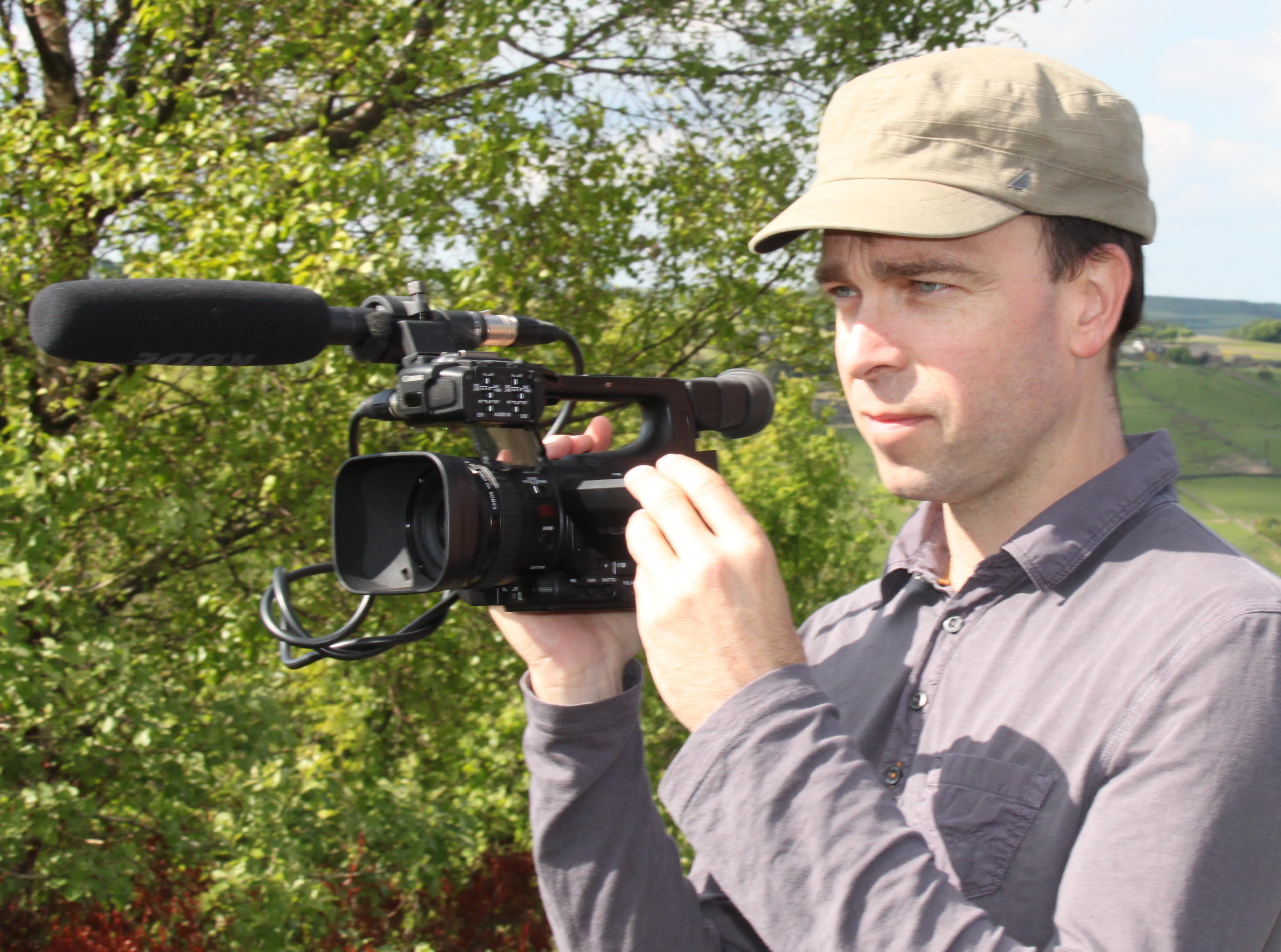
Barley Norton is Reader in Ethnomusicology and Director of the Asian Music Unit (AsMU) in the Music Department at Goldsmiths, University of London. He has conducted research on Vietnamese music and culture since the 1990s and has spent over 3 years in Vietnam. His publications include the film Hanoi Eclipse: The Music of Dai Lam Linh, the monograph Songs for the Spirits: Music and Mediums in Modern Vietnam, and two co-edited books Music as Heritage and Music and Protest in 1968, which won the American Musicology Society’s 2014 Ruth A. Solie Award.
SpeakersModerator
-
 symposiumDEC 1919/12/2018 | 10:00 - 16:30Vietnam Museum of EthnologyPost-Colonial Impact In Music Environment17:00 Action on site: Anothai NitibhonBarley Norton
symposiumDEC 1919/12/2018 | 10:00 - 16:30Vietnam Museum of EthnologyPost-Colonial Impact In Music Environment17:00 Action on site: Anothai NitibhonBarley NortonBarley Norton
Ethnomusicologist
Orchestral Music, Ritual and Politics in Decolonizing Vietnam
ABSTRACT
Decolonization is a creative process, as well as a historical and political one” (Ramnarine 2017). Framing decolonization as a creative process, this talk discusses the historical trajectory of orchestral music in postcolonial Vietnam. It focuses on the court orchestras established in Hue during the Nguyen dynasty (1802-1945) and the recent revival of the Nam Giao Sacrifice (lễ tế Nam Giao), a ritual for ‘venerating heaven’. The history and revival of court music (nhã nhạc) has involved complex transnational and intercultural exchanges and contentious historical appropriations. Although court orchestras are today often presented as an authentic reconstruction of Vietnamese music prior to colonial influence, their revival has been influenced by other postcolonial orchestras, such as national orchestras (dàn nhạc dân tộc) and European symphony orchestras (dàn nhạc giao hưởng). In this talk, I evaluate the decolonizing processes that have enabled Vietnamese court orchestras to take their place alongside other East Asian court orchestras as a display of national identity in the global community of nations. Paying attention to the local practices that underlie projections of national identity, analysis of the reconstruction of the Nam Giao Sacrifice reveals how the fraught political identifications of the ritual have become appropriated “into the mode of being of the modern nation” (Duara 1995: 27).
ABOUT THE SPEAKER
Barley Norton is Reader in Ethnomusicology and Director of the Asian Music Unit (AsMU) in the Music Department at Goldsmiths, University of London. He has conducted research on Vietnamese music and culture since the 1990s and has spent over 3 years in Vietnam. His publications include the film Hanoi Eclipse: The Music of Dai Lam Linh, the monograph Songs for the Spirits: Music and Mediums in Modern Vietnam, and two co-edited books Music as Heritage and Music and Protest in 1968, which won the American Musicology Society’s 2014 Ruth A. Solie Award.
Chung Shih HohChung Shih Hoh
President of the Singapore Composers Society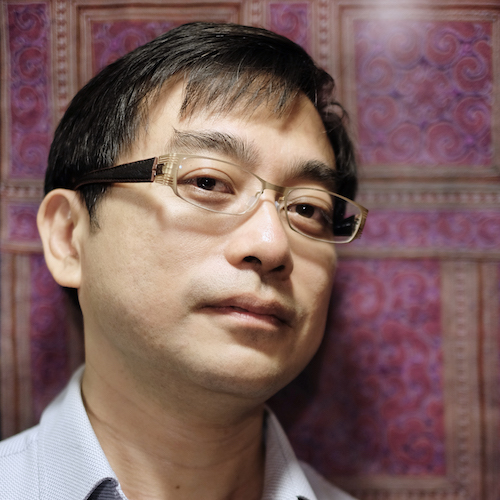
ABSTRACT:
Education is shaped by our value system. Being in a post-colonial condition is something we cannot deny, but we do have to consider also other factors such as globalisation, post-modernism, and nationalism. Issues of hierarchy of styles and practices, and equity and access are crucial factors at work in our value system that impact music education. On the public front, in terms of exposure to music, there is the hierarchy of styles and presentations promoted and supported in an interactive way between institutions, establishment, and public taste and perception: classical, pop/jazz, folk. This shaped the expectations and exposure of the students enrolled, and also that of potential employers on the students graduating, in terms of jobs and career prospects. In turn, syllabus content is considered and shaped. Within this larger context is the aspect of how we approach the teaching of music in schools, and in private. The issue of quality plays an important role in education. Quality is coded for standards and assessment. And quality is also shaped by cultural consensus and approved conventions. Such is our value system at work. Unpacking and understanding our cultural consensus, and hence value system is a good first step to discuss and shape the music education that interact with the larger musical scene in our region.
ABOUT THE SPEAKER:
Chung Shih Hoh is a composer from Singapore with an emerging international presence with commissions and requests from Asia, Europe and America. He has worked with some of world’s premier contemporary musicians.
He is also a guqin (Chinese 7-string zither) player. His qin guru is Ji Zhiqun, who studied under 2 of the most profound qin masters in China currently, Gong Yi and Wu Wenguang. His study of the ancient Chinese qin music led him to in-depth study of the Chinese literati culture, which includes brush painting, philosophy and garden design. Consequently, his interest in composition can be described as an exploration of a double intersection: one between the avant-garde and the experimental, and the other between the international contemporary and traditional Chinese literati cultures.
Chung Shih is also a sound artist, who works in interdisciplinary collaborations with MLuM, an international artist collective.Nguyen Thuy LoanNguyen Thuy Loan
 Anothai Nitibhon
Anothai NitibhonAnothai Nitibhon
Vice president for Academic and Research, Princess Galyani Vadhana Institute of Music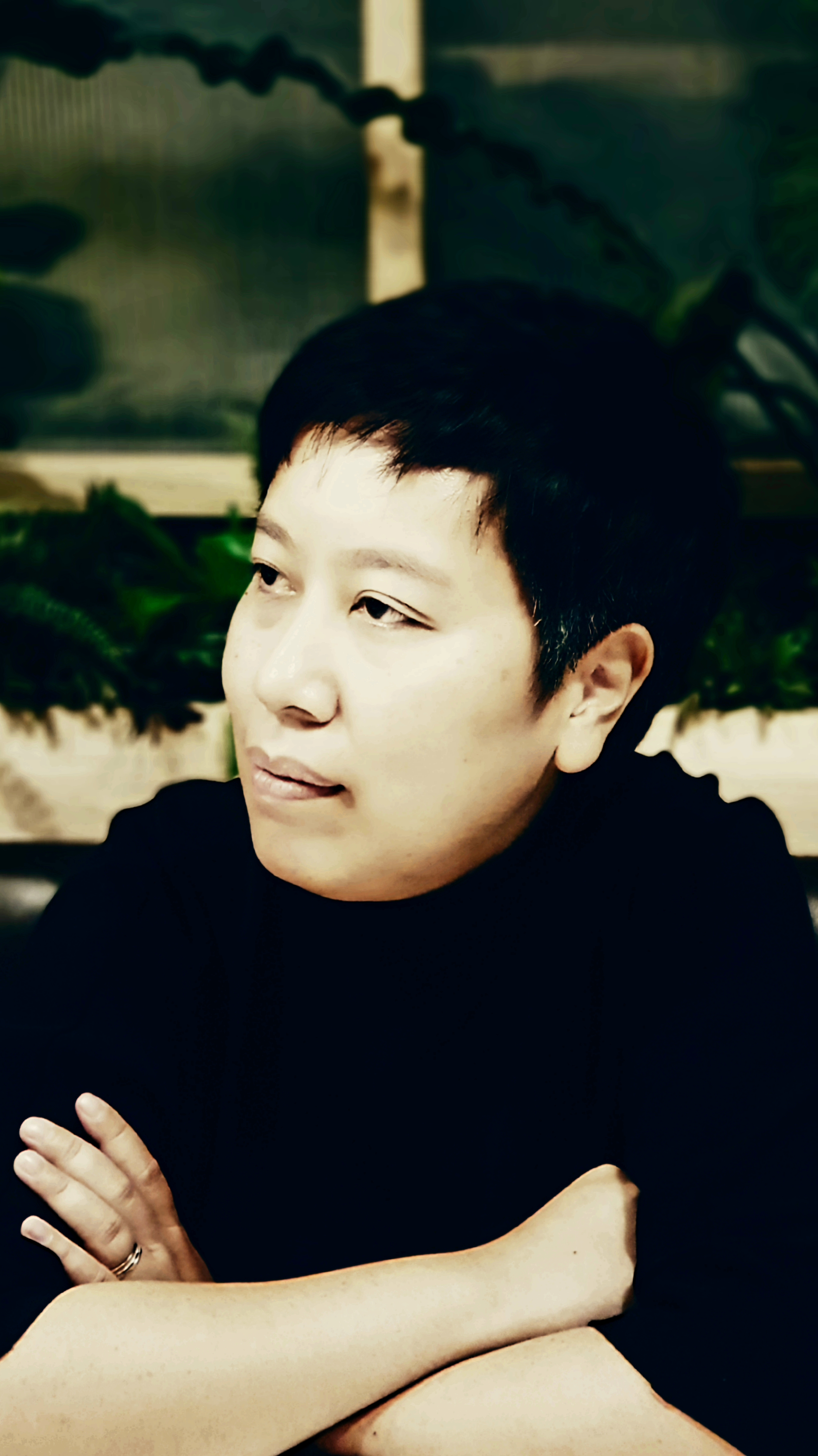
... as this music happens, so do I
ABSTRACT:
Music always has its place within the journey of humans; we travel with sounds, stories and beliefs, music might have been the first 'virtual reality' for humankind in bringing with us our home wherever we go. Colonisation, despite its real authority over the country, brought with it the myth of the new occupants which inevitably imposed, immersed and integrated into the local cultures, sometimes without the understanding of the original contexts and importantly, time. Therefore, the role of music education nowadays should not be anaesthetised, dormant or inert to correcting these differences, but to propose new narratives for our generation.
ABOUT THE SPEAKER:
Composer, Artist, and Educator Anothai Nitibhon completed her bachelor degree in Education from Chulalongkorn University and later obtained her PhD in Musical Composition from the University of Edinburgh in 2007.
Working on cultural frontiers, Anothai bases her musical research on the idea of intercultural and dialogues between cultures. She also intensively works in interdisciplinary projects collaborating regularly with dancers, artists, actors and designers.
Formerly a vice president and a dean at the Princess Galyani Vadhana Institute of Music in Thailand since it’s establishment in 2013, Anothai initiated and lead various international projects as well as advocated community engagement projects which became a mutual platform for musical development in Southeast Asia. Anothai is also an Executive Member of the Association of Southeast Asia Directors of Music and has been networking between institutions in Southeast Asian and European countries such as Germany, France and the UK.La Verne Dela PeñaLa Verne Dela Peña
Dean of UP College of Music, Diliman Univercity of the Phillipinnes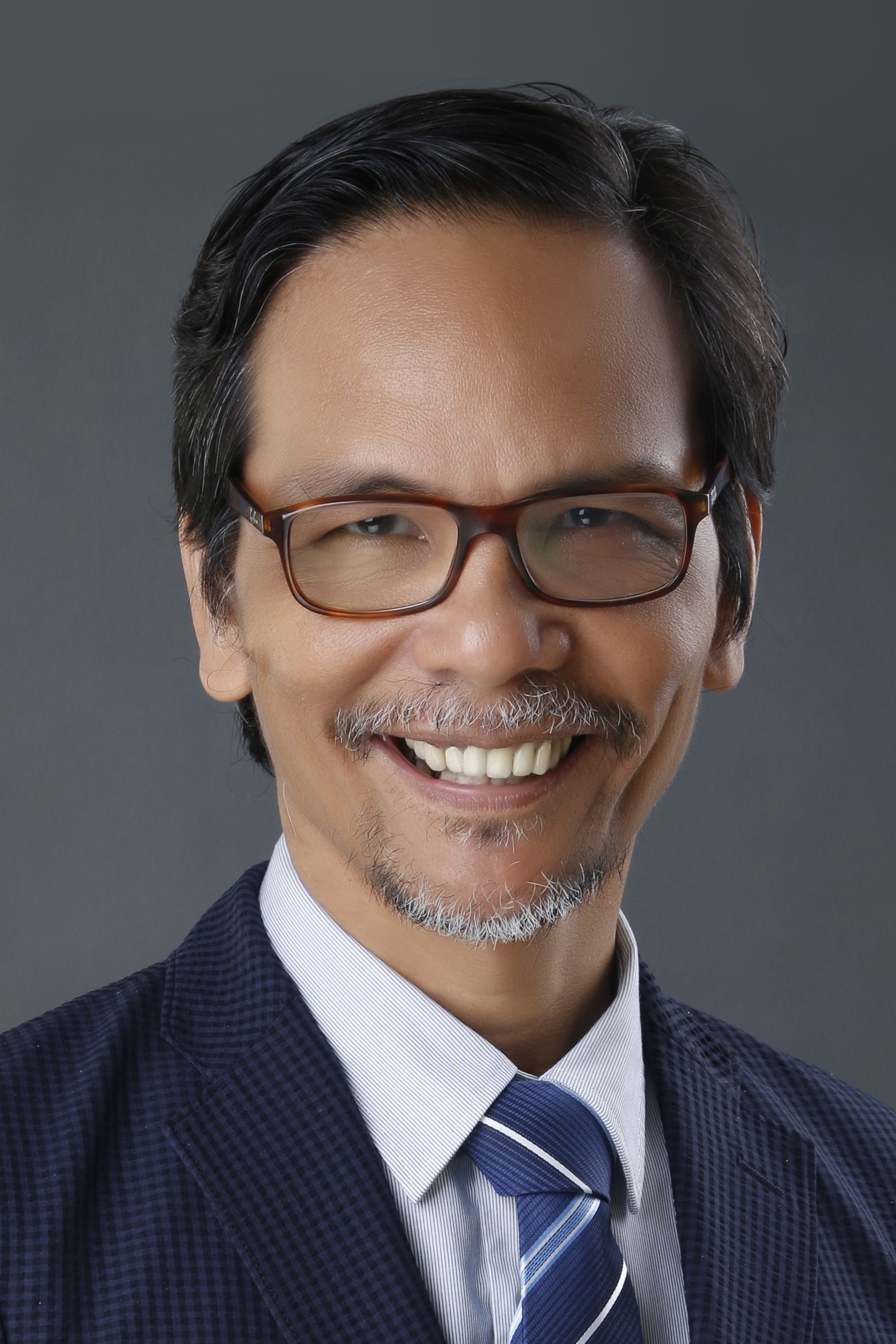
Putri Anak: The quest for the recovery of Southeast Asian myth, music, and drama in a Philippine Spanish colonial genre. (by Verne de la Peña, PhD
ABSTRACT
In this presentation, I discuss the musical play Putri Anak: Isang Bagong Komedya (Putri Anak: A New Komedya) premiered April of 2017 with music by myself, libretto by En Villasis and Juan Ekis and direction by Jina C. Umali. Written in the form of komedya, the production was an attempt to maintain the structural and distinctive dramatic components of this theatrical tradition among Christianized Filipinos from the 18th century but infuse it with Southeast Asian literary, music and dance elements. Also called moro-moro, the plot of the traditional komedya revolved around the conflict between Christian and Muslim kingdoms. These plays featured brass bands, marches, stylized movements, heightened speech and choreographed battles and conclude with the eventual conversion of the Muslim protagonists to Christianity. Instead, Putri Anak adapts a storyline based on a Maguindanao celestial maiden narrative akin to maiden myths found all over Southeast Asia (e.g. apsara). The music was inspired by the traditional and hybridized Southeast Asian music forms where gongs are used in tandem with western instruments (military drums, brass and woodwinds) common in the traditional komedya to reference musical styles soundscapes that mark popular theater forms, rituals, and ceremonies in the region. Putri Anak was intended to be “a komedya free of religion-based discrimination and violence and a komedya that celebrates Asian culture, heritage and artistic expression, a theatre of peace and unity for present-day Filipino audience” (from Putri Anak Press Release).
ABOUT THE SPEAKER
La Verne Dela Peña obtained his Ph.D. in Ethnomusicology from the University of Hawaii. Research areas include Benguet Kankana-ey, Tagalog, and Filipino hip-hop. He has presented papers and lectures on burial rites and prestige feasts in Buguias Benguet as well as repartee singing and drinking events in Sariaya Quezon.
Received Bachelor's and Master's degree in composition from the University of the Philippines. Has written for various media, including chamber, choral, dance and theater. His works have been published and performed in parts of Asia and America. He’s most recent work is Putri Anak a theater piece premiered at the Cultural Center of the Philippines in April of 2017. The work fuses the Philippine Spanish colonial genre called komedya with Southeast Asian stylistic elements.
As a member of the faculty in the University of the Philippines College of Music, he handles graduate and undergraduate courses in World Music, Philippine Music and Musicology. Has given lectures and seminars on the same areas all over the country and internationally. He is also music director of Tugma (Tugtugang Musika Asyatika), a student ensemble specializing in Philippine and Asian music. Since 2011, he has been producer and host of the weekly program in the university radio station titled Tunog at Tinig featuring Philippine music. He is currently the Dean of the University of the Philippines College of Music as well as Director of the UP Center for Ethnomusicology.Yii Kah HoeYii Kah Hoe
Composer, senior lecturer at SEGi College Subang Jaya, KL, Malaysia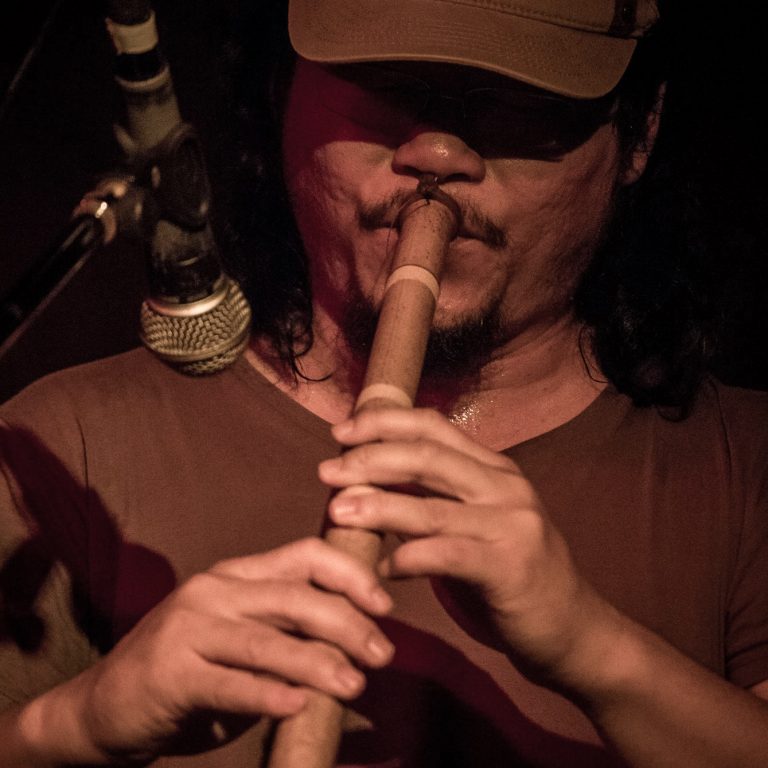
The Music of Malaysian Nationalism: cultural identity and value
ABSTRACT
Colonialism has altered Malaysian social structure and brought modern western ideas and concepts into society as well as the western style education. After Malaysia gain independence from Britain Empire, the colonial power’s rule upon Malaysia had an impact on the rise of nationalist movements because people tried to fight for their own cultural identity. To the day, Malaysian musicians still significantly adhere to European paradigms in music theory and practice, but at the same time, Malaysian musicians felt a strong desire to preserve their regional identity. In this talk, I will present how I guide my students to study and analysis of Malaysian traditional music and make use of its basic raw materials, and transformed them into their own compositional technique.
ABOUT THE SPEAKER
Yii Kah Hoe is a Malaysian composer and improviser. Yii was the winner of 11th BOH Cameronian Arts Awards (Malaysia, 2014), the winner of Malaysian Philharmonic Orchestra Forum for Malaysian Composers (Malaysia, 2007), the 3rd Prize in the International Composition for Chinese Orchestra (Singapore 2006), the finalist of International Composers Competition "Città di Udine" (Italy, 2010).
Yii has been recognized as one of the major voices among Southeast Asian composers of his generation. His music has been widely performed in Asia, America, and Europe by ensembles such as Ensemble Mosaik, Interensemble, Nuremberg Symphony Orchestra, Malaysian Philharmonic Orchestra, The Claremont Concert Choir, Singapore Chinese Orchestra, Hong Kong Chinese Orchestra, Birmingham Symphonic Winds, Pan-Pacific Ensemble and musicians such as Peter Veale, Christopher Redgate, Moritz Ernst, Jürg Henneberger, Maruta Staravoitava, Anne Harley, Luisa Sello, Duplum Duo and etc.
Recently, Yii won the prestigious National Outstanding Educator Award 2018 presented by the Private Education Cooperative of Malaysia. In the fall of 2015, Yii was the Scripps College Erma Taylor O’Brien Distinguished Visiting Professor at Scripps College in Claremont. Yii was guest composer and guest speaker at Royal Birmingham Conservatoire UK (2013 & 2014), York St John University (2014), Yale-NUS College (2017), Iowa State University (2015),Tianjin Conservatoire of Music (2017), Mahidol University (2017), Guanxi Conservatoire of Music (2014, 2015, 2016).
Yii was the festival director of Kuala Lumpur Contemporary Music Festival 2009, the festival director of SoundBridge festival (2013, 2015), the president of Society of Malaysian Contemporary Composers (2014 – 2016) and a senior lecturer at SEGi College Subang Jaya, Malaysia since 2000.Dayang YraolaDayang Yraola
Audio Visual Archivist and Curator at University of the Philippines College of Fine Arts & College of Music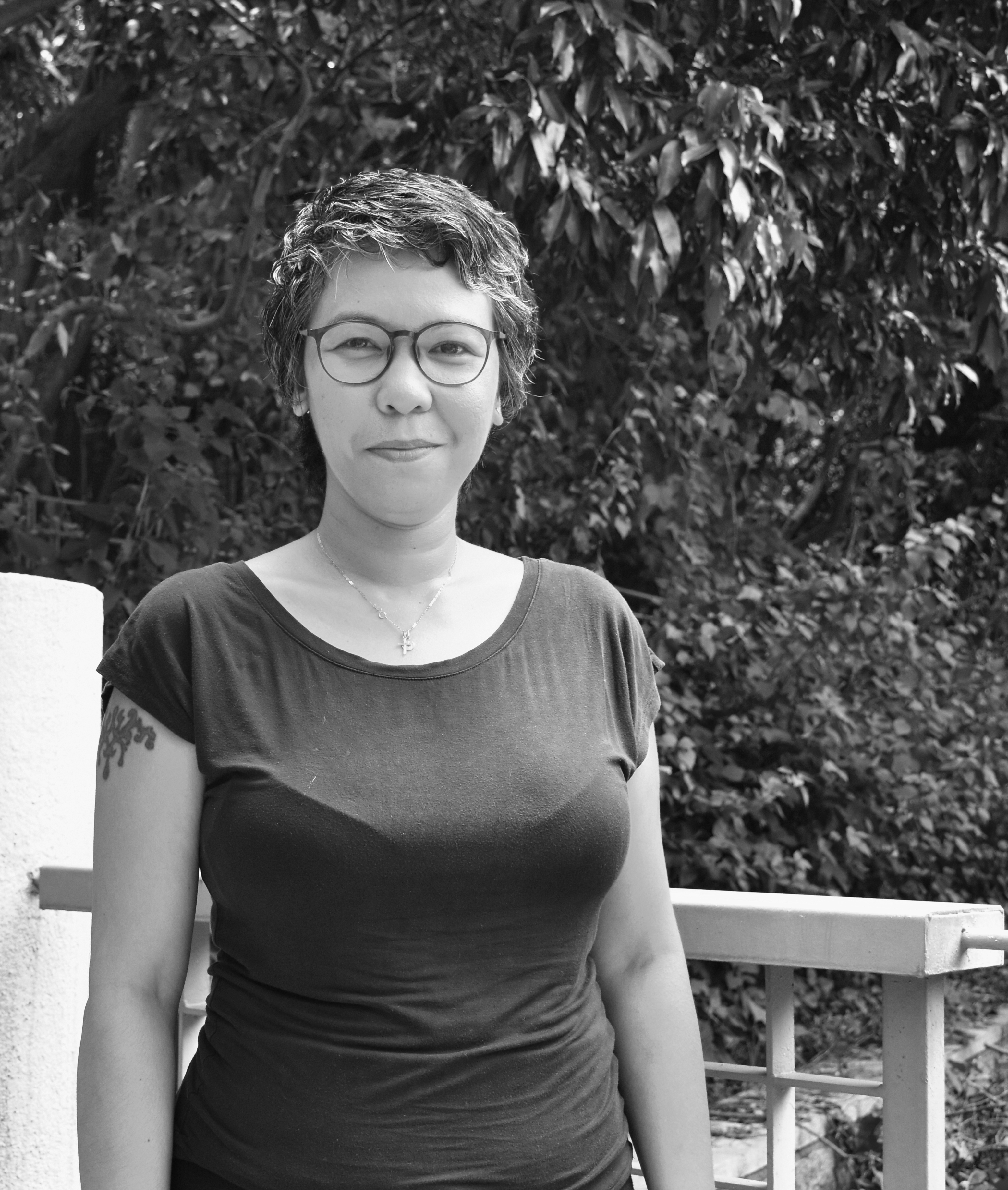
ABOUT:
Dayang Yraola is a curator based in Manila with practice in Southeast Asia. She received her Bachelor of Arts in Philippine Studies majoring in Literature and Art Studies, and a Masters in Museum Studies from the University of the Philippines. She was a fellow of Thomas Jefferson Foundation in 2001; an art associate of the National Art Gallery Singapore through Singapore International Foundation in 2010; and a grantee of the Asian Cultural Council in 2012. Dayang’s curatorial focus is in new media particularly process as media (archival and laboratory), technology as media (analogue, digital, mechanical, electronic), and senses as media. Her complex exposure with various fields of resource management and contemporary art motivates her to test the limits of curatorial as a multidisciplinary practice rather than an art profession.
DEC 2020/12/2018 | 10:00 - 16:30Vietnam Museum of EthnologyAcademia and non-academia17:00 Action on site: Kai LamDayang YraolaDayang Yraola
Audio Visual Archivist and Curator at University of the Philippines College of Fine Arts & College of Music
Genealogy of sound practice in Manila
ABSTRACT
This presentation identifies art and culture events in the 1960s to 80s, with relations to electronic, experimental, noise music and sound art in the 1990s to 2010s. I will argue that the characteristics of these sound practices, such as being entangled with music, visual and performance art; institutionally linked but community sustained; and internationally networked, which developed in the last three decade were seeded by specific events in the earlier three decades. I propose that this project of finding lineage of sound practice within culture programming is productive as it challenges the assumption that sound practice is simply foreign art adaptation.
ABOUT THE SPEAKER
Dayang Yraola is a curator based in Manila with practice in Southeast Asia. She received her Bachelor of Arts in Philippine Studies majoring in Literature and Art Studies, and a Masters in Museum Studies from the University of the Philippines. She was a fellow of Thomas Jefferson Foundation in 2001; an art associate of the National Art Gallery Singapore through Singapore International Foundation in 2010; and a grantee of the Asian Cultural Council in 2012. Dayang’s curatorial focus is in new media particularly process as media (archival and laboratory), technology as media (analogue, digital, mechanical, electronic), and senses as media. Her complex exposure with various fields of resource management and contemporary art motivates her to test the limits of curatorial as a multidisciplinary practice rather than an art profession.
Siew-Wai KokSiew-Wai Kok
Experimental vocalist, experimental film maker, co-founder and director at KLEX experimental film and Music Festival in Kula Lumpur
An Alternative Approach
ABSTRACT:
In this presentation, I’ll share my humble personal story being in the world of art, wearing different hats as practising artist, curator-organizer and educator simultaneously. Started out as a visual person interested in experimental moving images, then exploring sound and music through improvisation, and finally being a passionate facilitator to promote the kind of moving images and music that inspire me greatly. There are connections among these roles and in playing each role, it fulfils different needs. It has a sense of “mission” to take up the role of curator-organizer in Malaysia because it’s still lacking of alternative voices in the arts.
ABOUT THE SPEAKER:
From Kuala Lumpur, Malaysia, KOK Siew-Wai is a video artist, vocal improviser and artist-curator. She received her B.A. in Media Study, University at Buffalo, and M.F.A. in Electronic Integrated Arts, Alfred University in USA, where she lived from 1998-2005. She has performed and presented her artwork and curatorial programmes in Asia, Europe, Canada and USA, including Kaohsiung Film Festival (Taiwan), Nusasonic Festival (Indonesia), Choppa Experimental Music Festival (Singapore), Singapore International Film Festival, Asian Meeting Festival (Japan), International Film Festival Rotterdam (Netherlands), and many more. She is the founder and co-director of the Kuala Lumpur Experimental Film, Video & Music Festival (KLEX).
Kee Yong ChongKee Yong Chong
Composer, founder/director of Sound Bridge Contemporary Music Festival, Kuala Lumpu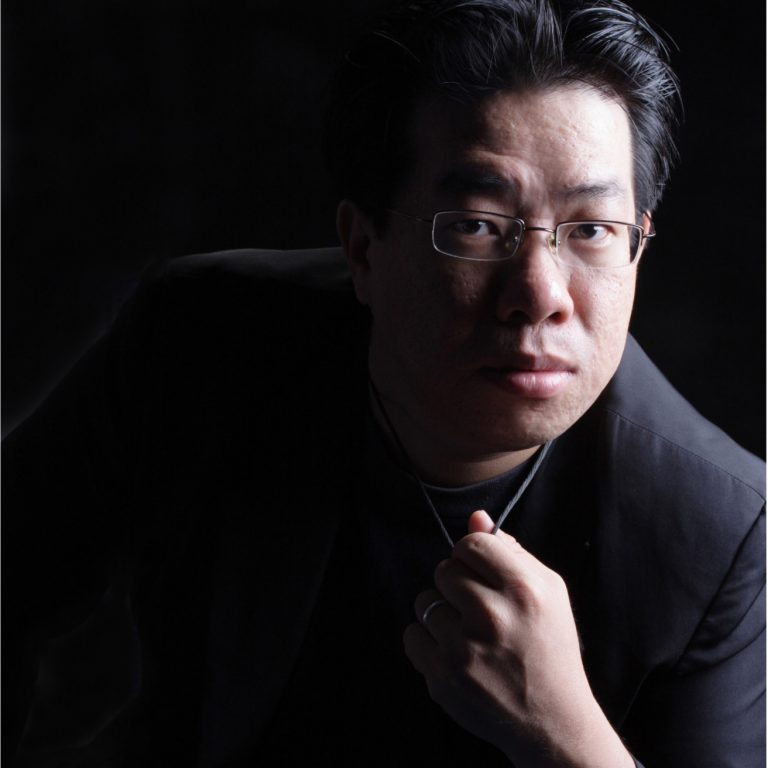
Multi-layered ethnic and cultural influences in my musical compositions
ABSTRACT:
In this lecture, I’ll explain the influence of multi-ethnic Asian cultures and heritage on my compositional development. Although the imitation of the outward features of other cultures is an important part of the attempt to compose cross-cultural pieces, such imitation is only one part of the learning process. The most difficult task is to make a meaningful cultural confluence out of these influences. My original contribution to music lies in the way in which I have activated the legacy of my multicultural Malaysian heritage and combined a strong focus on Chinese cultural traditions with a wider Malaysian context that involves theatre, philosophy, rituals, and spirituality.
ABOUT THE SPEAKER:
Kee Yong Chong, PhD, one of Malaysia’s leading contemporary music composers, possesses one of the most exciting voices in new music today. Indeed, his work has been hailed as “imaginative and poetic” by leading conductor-composer Peter Eötvös, and as “very inventive and artistically pure” by composer Jonathan Harvey.
Dr. Chong's distinctive style has won him many awards and commissions; His list of prizes is remarkable, as Prix Marcel Hastir, 2nd Seoul International Competition, Malaysian Philharmonic Orchestra International Composers' Award, Lutoslawski Award, BMW Award of Isang Yun Music Prize, the commission grant award by the Serge Koussevitzky Music Foundation, "The Outstanding Young Malaysian Award" and many others.
He has been awarded the composer-in-residency with Akademie der Künste (Germany), Herrenhaus Edenkoben (Germany), Asian Cultural Council (USA), the Center Henri Pousseur (Belgium), SWR EXPERIMENTALSTUDIO (Germany), Civitella Ranieri Foundation Fellowship 2014 (USA/Italy), Korea National Gugak Center fellowship, IGNM-VS / Forum Wallis in Leuk Switzerland, spring workshop Hong Kong and CulturalSumit Abu Dhabi 2018.
Dr. Chong is the creative director of Studio C, president of Society of Malaysian Contemporary Composers (2017-2019) and was the artistic director of the 2009 Kuala Lumpur Contemporary Music Festival and SMCC Contemporary Music Festival “SoundBridge” 2013, 2015 and 2017. 2016-2017 he was visiting professor of Shanghai Conservatory of Music.
Martinus Indra HermawanMartinus Indra Hermawan
Owner of Relamati Records and Indicator of Jogia Noise Bombing Festival, Indonesia (or Senaywa duo)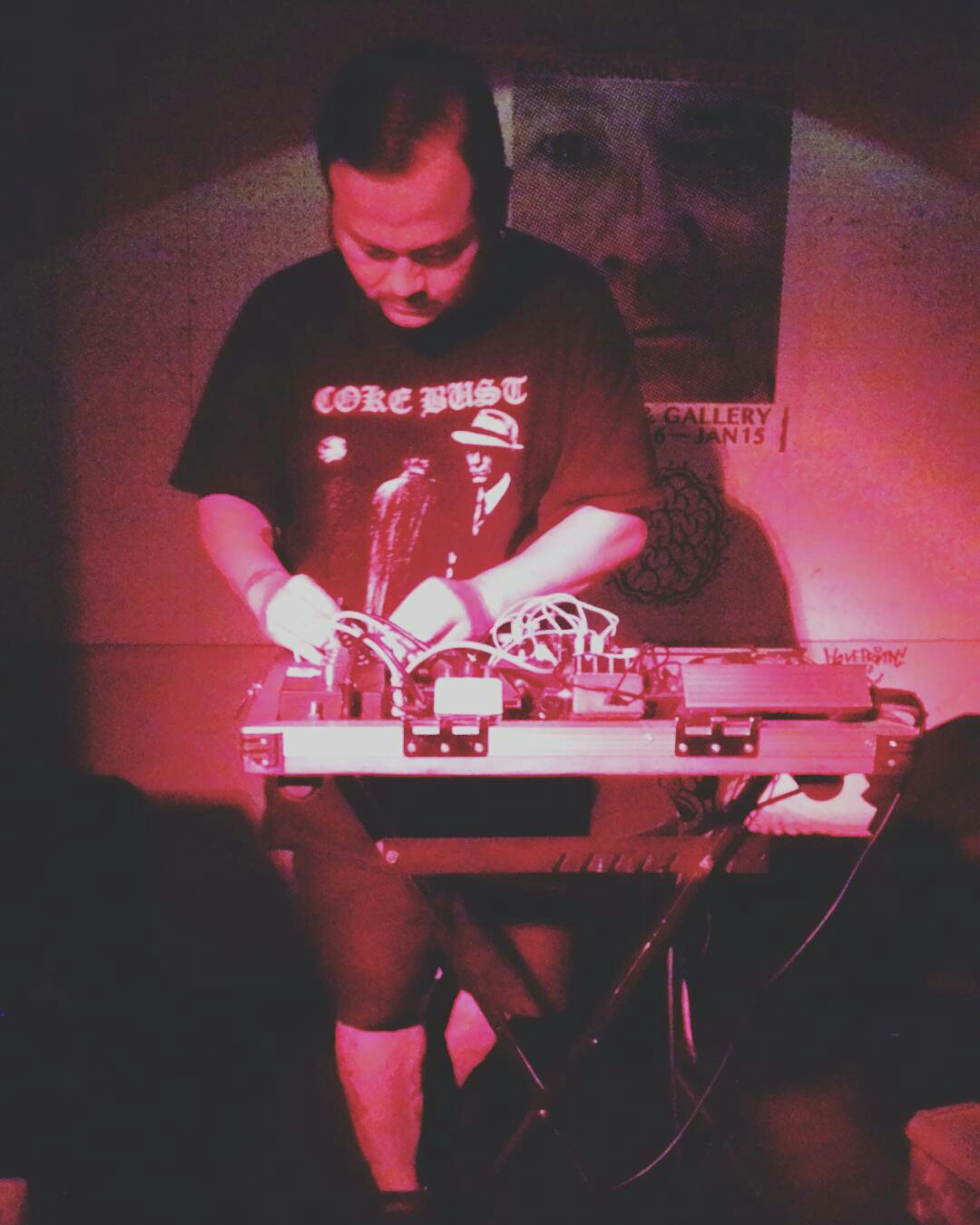
How Jogja Noise Bombing Explode Onto The Music Scene
ABSTRACT
In this presentation I will focus on two intiatives that have great contribution to the music scene in Jogja. One is Jogja Noise Bombing and the other Relamati Records. Jogja Noise Bombing is an open community for noise artist around Yogyakarta. Inspired by the concept of graffiti bombing, we created Noise Bombing, a performance concept of doing gigs illegally in the street. Relamati Records is a home made D.I.Y label from Indonesia run by me, Indra Menus. Started from 2002, the label concentrating on releasing music on tape, cd'r, 3"cdr, lathe cut, dvd and floppy disc.
ABOUT THE SPEAKER
Martinus Indra Hermawan, aka Indra Menus, is also known by his stage name To Die. He sparked the project To Die in 1998 as an offshoot band plays hardcore punk music in Yogyakarta, Indonesia. To Die later developed into a solo project where he is playing in a vocal composition with Drone and Ambient Noise.
Indra is also active in the independent music gig organizers, Kongsi Jahat Syndicate; band tour booking agency, YK Booking; General Manager of independent records label, Doggy House Records; and engaged in zine archives and exhibition, Jogjakarta Zine Attak!. Indra also working as a director in Jogja Records Store Club, a collective of records store and records label based in Yogyakarta.
In 2009, he became one of the initiators of Jogja Noise Bombing, a collective focus on music and experimental noise in Yogyakarta which is known to organize an annual Noise festival called Jogja Noise Bombing Festival.
In 2015, after doing research for more than 5 years, he released a compilation of 123 Experimental Noise musicians from Indonesia that record their music between 1995 - 2015. Titled Pekak! Indonesian Noise 1995-2015: 20 Years of Experimental Music from Indonesia, the sampler cassette released on New Zealand based label, End Of The Alphabet Records. The DVD audio version released 2 years later through Berlin based Syrphe, also available online: https://syrphe.bandcamp.com/album/pekak-indonesian-noise-1995-2015-20-years-of-experimental-music-from-indonesia
In 2016 Indra was being asked to be the curator of Podomoro, an annual exhibition of records stores in Kedai Kebun Forum art gallery, Yogyakarta. The exhibition that span for 2 weeks every December to January focussed on bringing the records stores live in an art gallery including selling and buying music releases, in-store performance, workshop and discussion about music.
Beside being musician and curator, Indra also writing in a Malaysian based music magazine called Shock and Awe as well as a music reviewer in Warning Magazine. Under Japan Foundation's Asia Center 2016 fellowship program, Indra Menus started his music research titled “Building a Network between Experimental Noise Scenes in South East Asia and Japan". In 2017, he released a book based on his research titled, Pekak! On Warning Books.
Trần Mạnh HùngTrần Mạnh Hùng
 Otomo Yoshihide
Otomo YoshihideOtomo Yoshihide
Independent musician/improviser, Tokyo, Director of Asia Orchestra project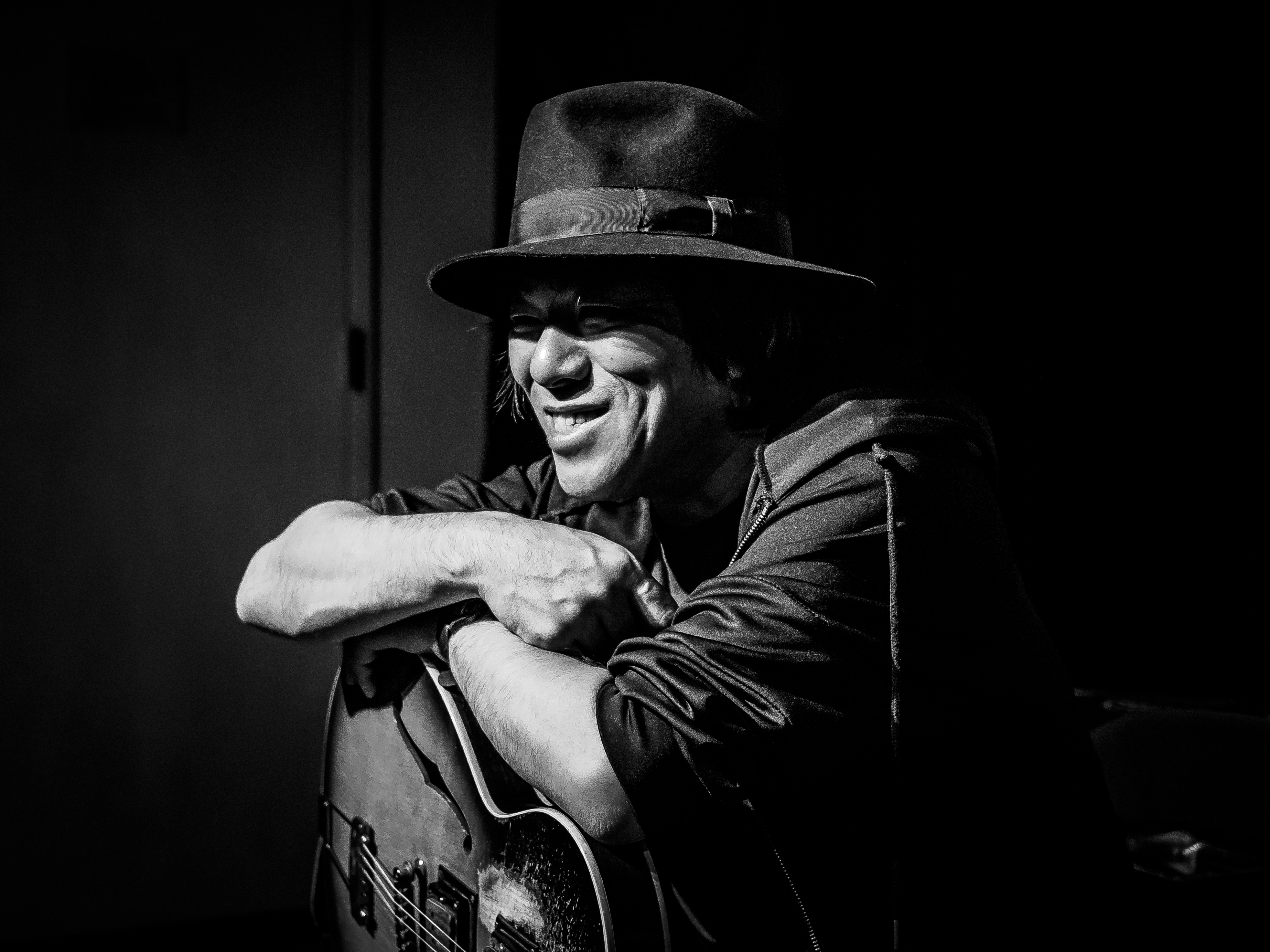
ABOUT THE SPEAKER
Otomo Yoshihide was born in 1959 in Yokohama, Japan. A musician and producer, he is a cross-genre music maker actively performing free improvisation, noise and pop, simultaneously and independently, on a global scale. As a film composer, he produced over 100 pieces of music for visual and film and TV works. In recent years, he has been making musical pieces and organizing a unique style of concert, mainly in collaboration with various artists and regular citizens under the name of “Ensembles.” Furthermore, he has been committed to music workshops with challenged children and participatory projects. He also attracts his activities beyond the borders of music, including “Project FUKUSHIMA!,” which started after the Great East Japan Earthquake in 2011.
Otomo was artistic director of Sapporo International Art Festival 2017 and Ensembles Asia 2014-2017
Lê Thuận UyênLê Thuận Uyên
Visual Art Curator
ABOUT
Le Thuan Uyen is an independent researcher and curator currently living and working in Hanoi. Her work investigates alternative histories of Vietnam, bringing to light personal narratives rendered absent, unknown or undesirable by the official historical record. Her projects often involve close collaboration with artists and investigate current socio-political contexts and their impact on artistic production in Vietnam. From 2014–2016 she was general manager of Nhà Sàn Collective — an artist-founded institution that aims to create room for new forms of expression, production and exchange. Her curatorial projects include: Gang of Five Chancing Modern (Hanoi, 2017), Sindikat Campursari (Jakarta, 2016), Embedded South(s) (2016), Miền Méo Miệng (Umea, 2015), Skylines With Flying People 3 (Hanoi, 2015-17),... Lê holds a BA in Politics from the University of York and MA in Cultural and Creative Industries from King’s College London. She was a resident curator at Art in General (NYC) from April–August 2017 through a fellowship with the Asian Cultural Council.
SpeakersModeratorSpeakersModerator
-
 Piano Plays Piano
Piano Plays PianoPiano Plays Piano
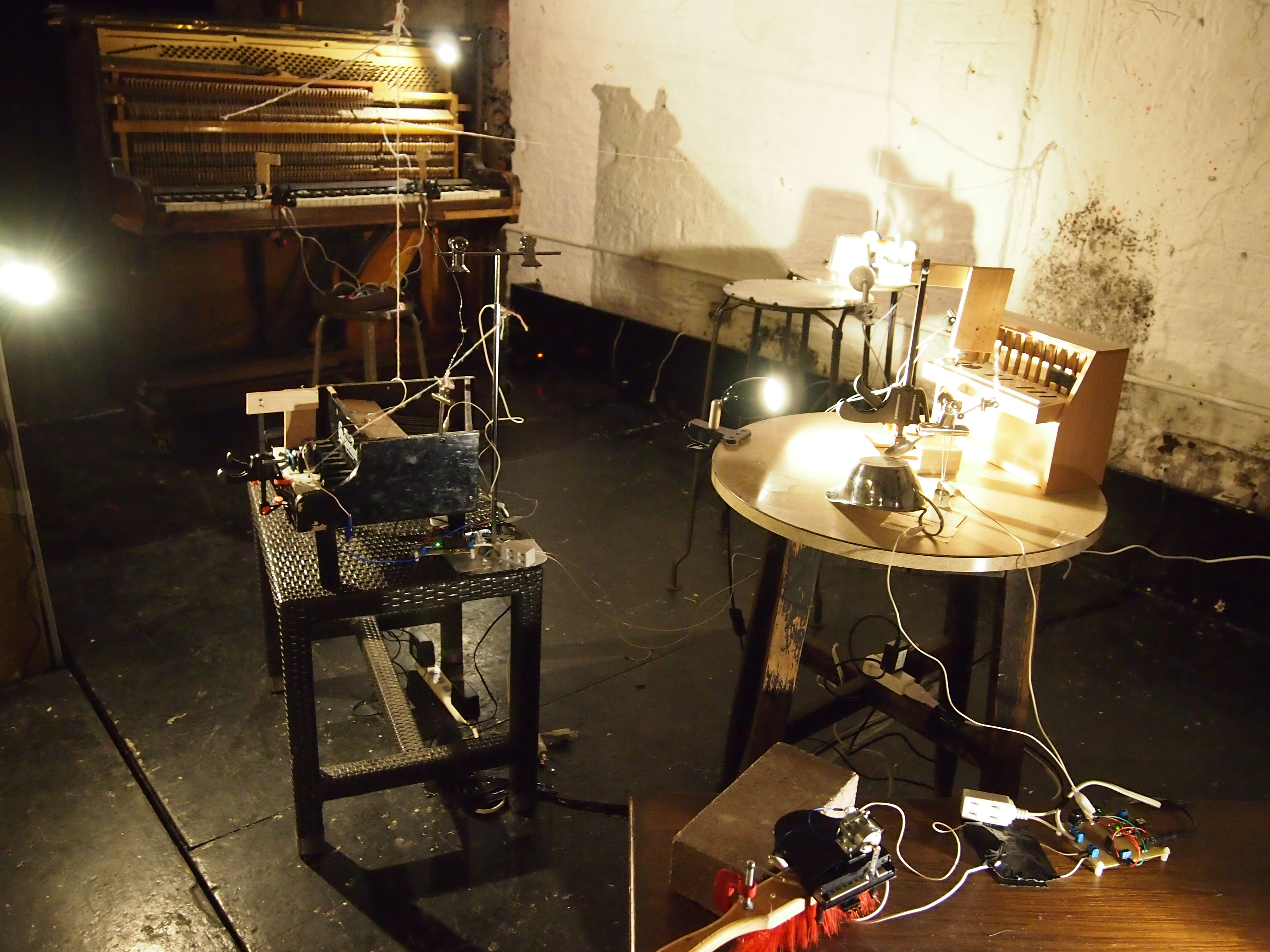
ARTIST STATEMENT:
This project is the study of how to play a piano with a piano using an ever expanding user interface for a piano.
It is the study of prepared pianos made by expanding the user interface of the piano but without modifying its oscillators, that is, the piano strings.
User interfaces determine the behaviours of both mechanisms and humans.
And user interfaces for musical instruments determine both the sound of the instrument and the behaviour of the performer - especially for the piano, who'se interface is already complicated and from who'se complicated mechanism comes out complicated compositions.
This work consists of an automatic player device, timer switch circuits , strings and wires, an upright piano and toy pianos.
Each instrument is connected and activated by a series of fragile and vulnerable strings, so they won't be played precisely, rather an unexpected composition will be played.
Could we expand this interface more and more to make even more new instruments and compositions? This work both asks, and tries to answer, such a question.
ARTIST BIO:
Elico Suzuki (aka. suzueri) is one of notable Tokyo based sound artist and improviser. She studied Fine Art at Musashino Art University in Tokyo and Media Art at the Institute of Advanced Media Arts and Sciences (IAMAS) in Ōgaki, Gifu, Japan. Since 2018, she has been a part-time lecturer at Musashino Art University.Her recent interests have centred on the exploration of the gaps and narrative aspects between the interaction of instruments and particular embodiments, for which she both performs and makes art work - these involve her making complex interfaces with various handmade devices that play with pianos and other instruments . Her latest works include 'The Moon of Jungfrau (solo exhibtion, NTT InterCommunication Center, Tokyo, Japan 2007), 'SFX Seoul' (group exhibtion, Alternative LOOP Space,Korea,2018) 'Live at Ftarri' with Roger Turner, Tetuzi Akiyama, and Makoto Oshiro (album[CD], Ftarri, 2016).A transdisciplinary sound art installation with the upright piano and devices. There will be an improvised perfomance by the artist at 17:20 on Dec 18th.
Bảo tàng dân tộc học Việt NamPiano Plays Pianoby Elico Suzuki (Japan)